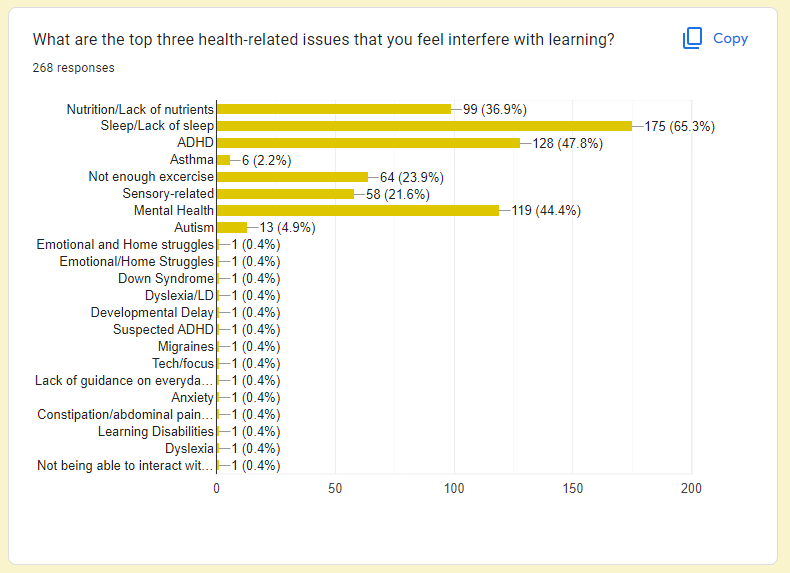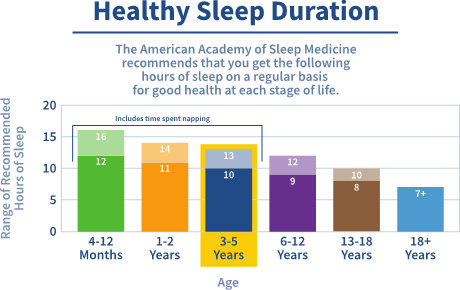With the new school year upon us, we celebrate the return of students to in-person learning with hopes that this year will continue to be the most “back to normal” that it has been since pre-pandemic days. And making sure children are well-rested is an excellent way to support a smooth transition back into the classroom.
The instability of the past two years has been especially hard on schoolchildren. Schools have done their best to switch between remote, hybrid, and in-person learning in response to COVID spikes and falls, but learning has suffered for many students. According to NWEA, a not-for-profit organization that develops assessment solutions, elementary school students may need at least three years to catch up to where they would have been had the pandemic never happened.
Now, more than ever, students must be prepared to learn so they can make up those losses. Research tells us that sleep plays an often forgotten but always critical role in our children’s development and learning. Here are five ways that a good night’s sleep can help your child succeed this year:
- Improved Attention and Alertness: A lack of good sleep is linked to reduced activity in brain areas associated with attention and cognition. A good night’s sleep helps students attend to classroom lessons and instruction.
- Enhanced Emotional Regulation: Poor sleep causes hyperactivity in the amygdala, the region of the brain associated with emotions. Well-rested children are more likely to be happier and more resilient.
- Better Behavior: With stronger emotional regulation, a child’s behavior can improve. A child with pro-social behavior is more likely to get along with their peers, follow instructions, and be ready to learn.
- Improved Learning: A child learns both when awake and asleep. During sleep, a child’s brain makes new information easier to retrieve and apply appropriately.
- Better Memory: During sleep, the brain replays memories from the day. This strengthens neural connections and helps new information—things like times tables, grammar rules, and the scientific method—“stick” in a child’s brain.

A Pajama Program Community Partner in Kentucky recently shared results from their staff survey about the top three health-related issues they felt interfered with learning. Nearly two-thirds of them identified sleep as a key concern.
Tips on How to Help Your Child Get Healthy Sleep:
Have a Routine: Research shows that practicing a bedtime routine at any age can help a child sleep better. Choose relaxing activities to wind down and practice the same ones every day in the same order. This way, your child will know what to expect. Some examples include taking a warm bath, washing up, and of course, changing into cozy pajamas and reading a bedtime story.
Eat for Sleep: Be mindful of what your child eats in the hours before bedtime. You’ll want to avoid sugary foods, large meals, and foods with caffeine 2-3 hours before bedtime. Instead, offer a light, healthy snack such as fruit, peanut butter and crackers, or nuts.
Create a Sleep Zone: The best sleep environments are cool, dark, and quiet. The ideal sleep temperature is in the range of 60-65 degrees Fahrenheit. Try lighter pajamas or fewer blankets if adjusting a thermostat isn’t possible or convenient. Blackout curtains are useful if bright light leaks through regular curtains. White noise or soft music can help cancel out loud noises.
Turn Off Screens: Devices emit blue light that prevents the body’s natural production of melatonin, which regulates the circadian rhythm or the “body clock”. All screens should be turned off at least 30 minutes before bed. Bonus points if you can make the mattress, and even the whole bedroom, an entirely screen-free zone.
Get the Right Amount of Sleep: A common misconception is that children need 8 hours of sleep, like adults. Actually, young children need more sleep and have different sleep needs depending on their age. See the chart below to see how many hours of sleep your child needs, including naps:
